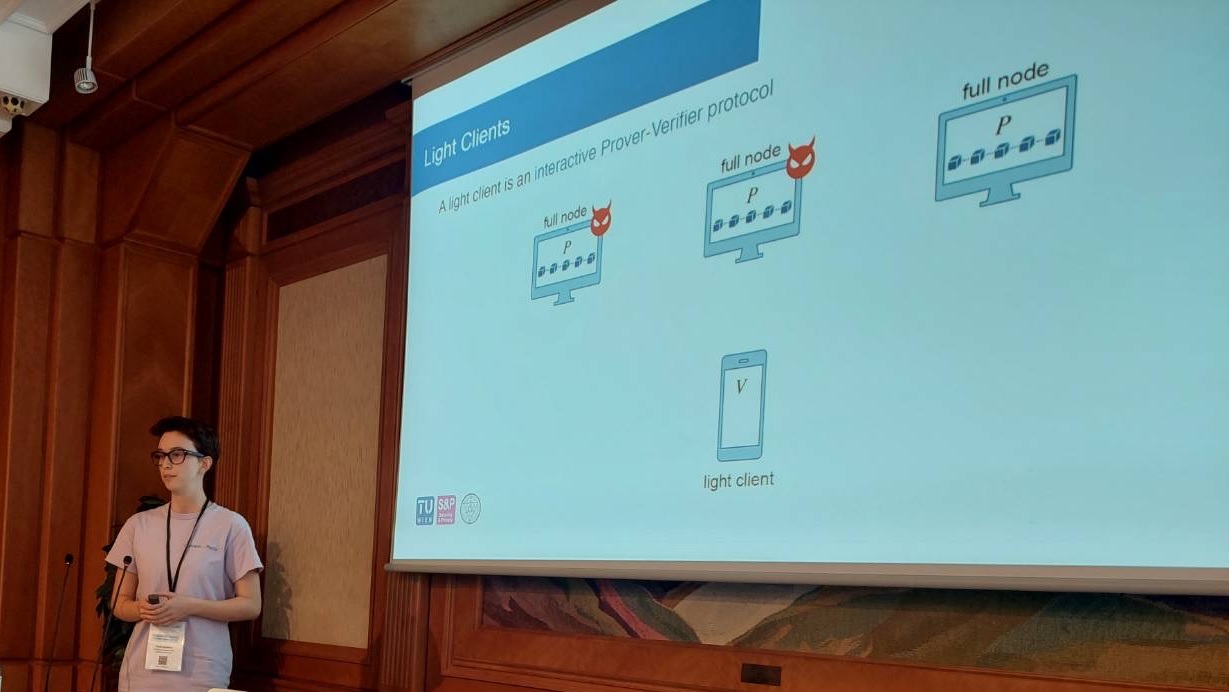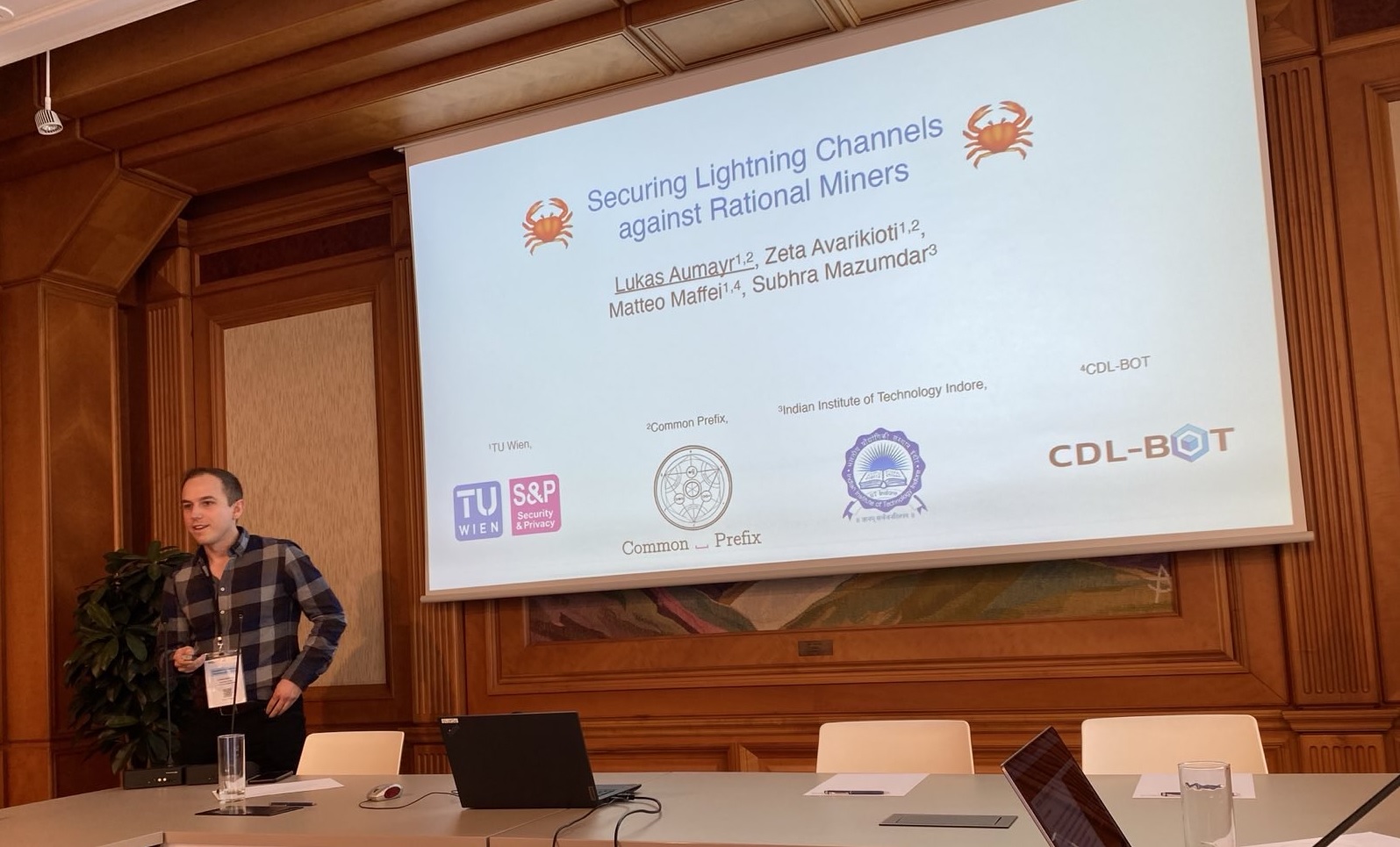Workshop on Scalability & Interoperability of Blockchains
SIB is a workshop dedicated to exploring the scalability and interoperability of blockchains. It seeks to bridge theoretical and practical perspectives by gathering experts from security, cryptography, distributed systems, economics, and policy-making. Scalability focuses on sustaining a blockchain’s performance — specifically throughput and latency — as its network expands. Interoperability involves linking multiple blockchains to enhance protocol functionalities. The objective of SIB is to explore cutting-edge solutions in scalability and interoperability, evaluate their benefits, and examine the potential drawbacks.
At SIB 2024, held on September 26, 2024, at the Austrian National Bank (OeNB) in Vienna, Austria, Zeta Avarikioti served as the Chair of the Organizing Committee, while Lukas Aumayr, Matteo Maffei, and Giulia Scaffino contributed as members of the Program Committee for the workshop.
Giulia Scaffino chaired Session 1: Consensus Layer and presented “Blink: An Optimal Proof of Proof-of-Work,” her joint study with Lukas Aumayr, Zeta Avarikioti, Dionysis Zindros, and Matteo Maffei, during Session 3 on Interoperability. Blink is the first provably secure O(1) PoW light client that operates without a trusted setup. It can be used for various applications, from payment verification to bootstrapping and supporting blockchain bridges. This innovation marks a significant departure from traditional methods, where light clients like the Simplified Payment Verification (SPV), initially described by Nakamoto in the Bitcoin whitepaper, required resources that increased linearly over time. The team has proven that Blink is secure within the Bitcoin Backbone model and has evaluated its proof size, demonstrating that, as of this writing, Blink can secure a commitment to the current state of Bitcoin by downloading only 1.6KB. This is in stark contrast to the 67.3MB and 197KB required for SPV and zk-based clients, respectively.
Lukas Aumayr chaired Session 3: Interoperability and also took the stage at Session 2: Payment Channels, unveiling groundbreaking research titled “Securing Lightning Channels against Rational Miners.” Conducted with collaborators Zeta Avarikioti, Matteo Maffei, and Subhra Mazumdar, the study provided the first evidence that Lightning channels could withstand timelock bribing attacks under rational behavior conditions. This assumes channel parties continuously monitor the transaction pool (mempool) and prevent draining the channel funds in one direction. This research underscores the importance of maintaining a coin reserve within each channel, a strategy already implemented in the Lightning Network for different reasons.
The team introduced “CRAB,” the first Lightning-compatible construction that ensures security against both Byzantine parties and rational miners without constant mempool monitoring. Furthermore, they showcased “Sleepy CRAB,” an innovative construction allowing participants to remain offline indefinitely, challenging the traditional need for constant online connectivity in payment channels. This breakthrough, backed by a proof-of-concept and an analysis of its Bitcoin cost implications, marks a significant advancement in blockchain technology, enhancing security and operational efficiency.


